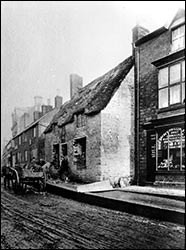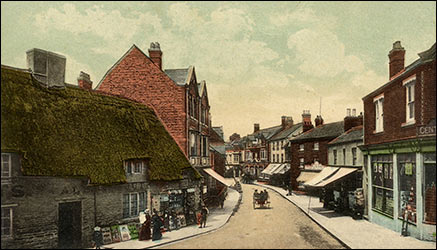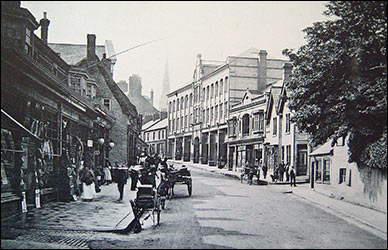|
||||||
|
Business & Commerce |
||||||
|
||||||
|
Rushden grew from a village to a town in the late 1800s. It had been centred on the brook that runs from Bedford road, through the Hall Park and along Duck Street, on towards the Railway and out via Spencer Park to join the River Nene. The brook was the main source of water in earlier times and most villages grew where water accessible. As the shoe trade became mechanised in the 1880s, people flooded in for the work, and this put pressure on the infrastructure. The brook was becoming polluted and houses had shallow wells for drinking water, but these too were becoming unsafe, so in the 1890s with a new local authority - a water supply and drainage system were the first priority. Eventually the need for clean water saw the piped supply from Sywell in 1906. The early shoe factory owners were also building rows of terraces for the incoming workers to live in, close to their factories. The new main street was already developing at a higher level away from the dangers of flooding, but parallel to the old main thoroughfare. Two large factories were built there, Cave’s & Denton’s, but after the second fire at Cave’s factory in 1901, the factories started to move away from the centre and into the streets where the new houses were being built for the influx of workers. Most of those streets also had small grocery shops that began in a front room in the terraces. The railway came in 1893 and this brought a greater variety of goods to the town. The main street, now called High Street was seeing offices and specialist shops trading there. In the 1960s the supermarkets began with the Rushden Industrial Co-op shops. By the 1990s the huge hypermarkets were being built on the outskirts of town, and gradually they stocked broader ranges of goods. In recent years the small shops have been struggling to compete with those giants. A survey of the high street shops today shows that smaller specialist shops are once more taking over more of the street.
|
||||||


